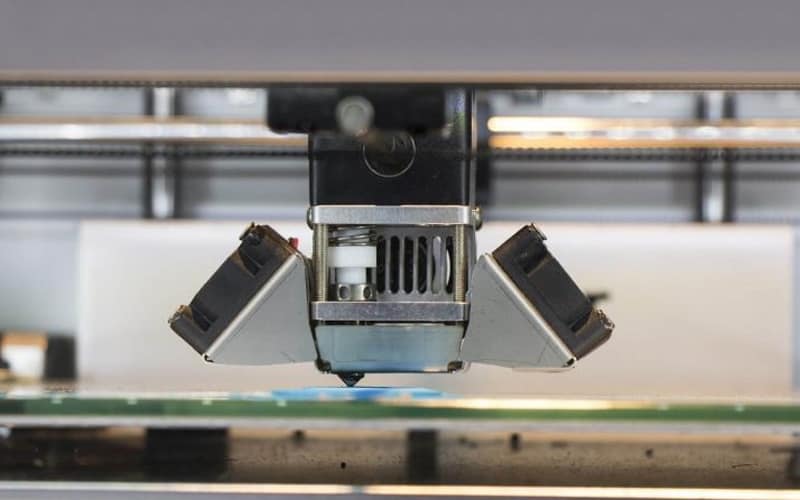How To Level a 3D Printer Bed (FDM 3D Printing)

Table of Contents
Making sure that the bed of your 3D printer is properly leveled is absolutely vital in order for it to work properly and 3D print without any issues. So it is really important to know when it needs leveling and to then know how to level it.
We've covered all of the basic things you need to know about this, along with a step-by-step guide on how to actually level a 3D printer bed. So let's jump right in!
Prime Day is finally here! Find all the biggest tech and PC deals below.
- Sapphire 11348-03-20G Pulse AMD Radeon™ RX 9070 XT Was $779 Now $739
- AMD Ryzen 7 7800X3D 8-Core, 16-Thread Desktop Processor Was $449 Now $341
- ASUS RTX™ 5060 OC Edition Graphics Card Was $379 Now $339
- LG 77-Inch Class OLED evo AI 4K C5 Series Smart TV Was $3,696 Now $2,796
- Intel® Core™ i7-14700K New Gaming Desktop Was $320.99 Now $274
- Lexar 2TB NM1090 w/HeatSink SSD PCIe Gen5x4 NVMe M.2 Was $281.97 Now $214.98
- Apple Watch Series 10 GPS + Cellular 42mm case Smartwatch Was $499.99 Now $379.99
- ASUS ROG Strix G16 (2025) 16" FHD, RTX 5060 gaming laptop Was $1,499.99 Now $1,274.99
- Apple iPad mini (A17 Pro): Apple Intelligence Was $499.99 Now $379.99
*Prices and savings subject to change. Click through to get the current prices.
What you will need to level a 3D printer bed
There are a few tools that you will need in order to level the 3D printer bed and to ensure that everything is in working condition.
Here is a list:
- A brass brush
- A clean cotton cloth
- An index card
- A razor blade or spatula
- A screwdriver or hex key
- Dish soap or similar to remove dirt and dust
- Heat-resistant gloves
- Isopropyl alcohol, for cleaning a build surface that can't be removed
Step-by-Step guide instructions to level a 3D printer bed
Now that we've covered the why of leveling a 3D printer bed and the signs that indicate when it needs doing, it's finally time to get on to the main part of this article and give you the step-by-step instructions on how to do it.
Here are the instructions to level a 3D printer bed:
Step
Clean the nozzle
Before you start, make sure the nozzle of the 3D printer is clean, with no residue. This is important, as the distance of the nozzle from the surface bed will affect the adjustments needed.
Step
Clean the build surface
This is an important step to prepare for the actual leveling. Make sure you remove all dust, debris, and dirt. No residue should be left on the build surface.
If you can remove the surface, then it can be easily cleaned with some dish soap or similar, in the sink. If not, then you can use isopropyl alcohol or similar, to clean it without it being removed. Make sure you check any instructions that came with the 3D printer, in regards to the cleaning process, so that you're not damaging any of the parts.
Step
Adjust screws
Adjust the screws holding up the surface bed so that you create more space between the bed and the nozzle. This will help with re-adjusting.
Step
Set the printer to auto-home
This will get the nozzle back close to the build plate.
Step
Calibrate
Calibrate the 3D printer bed so that it is leveled on all four corners and in the middle. Do this by measuring the gaps with the index card, and adjusting the screws. Make sure you aren't adding any pressure on the bed while you work with it, or else it will move downwards, rendering any adjustments pointless!
Step
Print a first layer
Before using the 3D printer again, print out the first layer of an object to check the leveling of the bed. If everything seems okay, then the leveling has been completed successfully.
Why do you need to level a 3D printer bed?
Before we tell you how to level a 3D printer bed, you might be wondering why exactly it is so important to do so. So let's explain!
3D printing is all about the filament, and about the filament being controlled through the predictable behavior that it showcases in certain temperatures. In that way, a certain form can be arranged, so that the 3D printed object is possible.
The print bed is a vital part of this process, as it is the surface upon which the filament will be dropped, and it needs to be even so that the building surface is accurate enough for the design to be successful.
If the bed of the 3D printer is not properly leveled, then the building surface is uneven, and the 3D object will not come out right, as the filament will not have ended up in the right designated positions. But if the 3D printer bed is leveled correctly, then the filament ends up in the right place, with the surface being even, so that the 3D printed object comes out exactly as designed.
You can usually tell if a 3D printer bed is uneven or unleveled quite quickly, as soon as the first layer of filament is laid down because you will notice that it doesn't look right. This is why it is quite common to test the 3D printer with a very small design beforehand, before actually using it for the proper desired object.
When should you level a 3D printer bed?
If the 3D printer bed is level, then the first layer of filament will be even, providing a good base for the object to be built upon. If it needs leveling, you will notice quite quickly, as that first layer of filament will be uneven and way off the design, meaning the object will not look as intended.
But here are some other signs that indicate that your 3D printer bed needs leveling:
- The height and the width of the filament varies across the build surface, which means that the bed is uneven
- The gap and space between the lines of filament varies across the build surface, once again indicating that it needs leveling
- The filament is only sticking to some of the areas on the build surface, instead of on all of them, meaning the base is unstable and uneven
- The print of the filament is warping in some places, resulting in an uneven build
If you're not quite sure if the 3D printer bed needs leveling or not, then it is recommended that you level it nevertheless. It is better to put in a little more effort, even when not needed than to leave the printer be and then realize that the bed is indeed uneven, meaning the job is compromised and needs to start over again.

